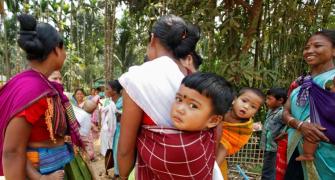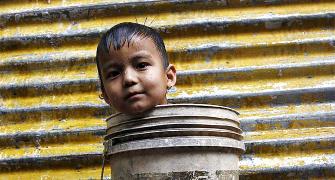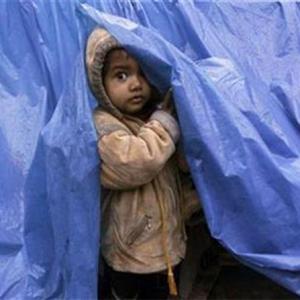While India's human development index has improved, absolute performance levels aren't satisfactory, says T N Ninan.

The Human Development Report (HDR) that was published recently by the United Nations Development Programme gave India high marks and low. It is important that the country take note of both.
The good news is that India has performed much better than average when it comes to the rate of improvement on its Human Development Index -- which is a composite of life expectancy, years of schooling and per capita income.
Among the large economies, only China did better.
India’s index has improved by about 46 per cent since 1990 -- an annual rate of improvement of 1.52 per cent. That compares with China’s 1.57 per cent, but the comparison is unfair to China because percentage improvements become more difficult as you go higher up the scale.
Over the quarter century (1990-2015), India has moved ahead of nine countries that had a better index score in 1990, while no country with a worse index score in 1990 has overtaken India subsequently.
Also, India moved from the “low” human development category to the “medium” human development category about a decade ago; if there are no surprises, the country should expect to graduate to the “high” human development category (where China already is) in about another decade.
The fastest way to improve India’s score would be to improve its education record -- the average girl child has only 4.8 years of schooling, compared to 8.2 years for boys.
The average for all children is 6.6 years; if that solitary figure were improved to 12 years, which Uzbekistan reports at a similar income level, India would move into the “high” human development category.
The other factor to note is a distressing level of gender inequality, which is most pronounced in education levels, and then in incomes. The male-female ratio for incomes in India is about 4:1, whereas for all medium development countries it is less than 3:1.
The heart of the problem lies in the limited role that women have in the workforce. Only the Muslim countries stretching from Pakistan all the way westward to Morocco have a worse record of women participation in the workforce.
While India’s record in improving its overall human development index is creditable, its absolute levels of attainment give no cause for satisfaction, and point to how much more distance has to be travelled.
For instance, some 55 per cent of the population experiences what the UNDP terms multi-dimensional poverty (a composite of several indicators like stunting and being under-weight for one’s age). A further 18 per cent are in danger of experiencing such poverty, making for a total of about 73 per cent for the two categories.
This should serve as a wake-up call when the headcount of those below the international poverty line of $1.90 per day (using purchasing power parity) is 21.2 per cent, and might beguile one into thinking that the country is well on its way to abolishing extreme poverty.
A further reason for introspection comes from the fact that virtually all our South Asian neighbours do better. Whether it is Pakistan, Bangladesh or even Nepal, all of which have lower (and sometimes substantially lower) per capita incomes, the poverty headcount ratio is better or much better than India’s.
The heart of the problem might be said to lie in the government’s failure to raise its level of spending on health and education, and to get value for such expenditure.
India’s public expenditure on education is clearly inadequate, but its public expenditure on health is even worse, at barely 1.4 per cent of GDP.
To reach the level of such expenditure for all medium human development countries, budgets would have to be raised straightaway by 30 per cent.
When all the numbers are digested, the message that comes through is clear: What needs attention most of all are public healthcare, public schooling and gender equality.
It is a pity that one hears so little about all three in the debates that occupy our public spaces.
Photograph: Reuters.










